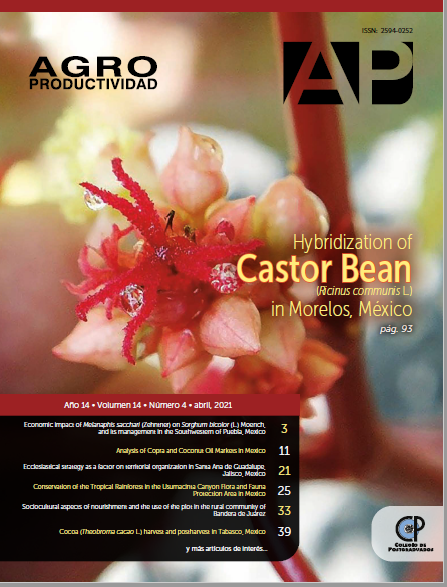Physical and chemical attributes of prickly pear cactus (Opuntia ficus-indica) varieties Copena, Pelon Blanco and Pelon Rojo
##plugins.themes.bootstrap3.article.main##
Keywords
agri-food, byproducts, physical-chemical, measurement techniques, prickly cactus.
Resumen
Objective: attest and compare the fundamental attributes for fresh raw cactus cladodes and its chemical constituent’s quality when dried and grounded for three varieties of prickly pear cactus “Copena”, “Pelon blanco” and “Pelon rojo”.
Design/methodology/approach: measurements of the physical attributes and chemical constituents were made by using proved and reliable techniques. Data will aid to explore the potential for these cactus materials when being handled from basic to complex processes, considering its need for size and quality of storage and their effect when they interact with processing devices and handling apparatus for the new product being elaborated.
Results: the physical attributes among the three assessed cactus varieties showed slight differences in their parameters, but length, wide and electric conductivity. While for their chemical analysis, cactus cladodes were chopped, dried and grounded. Chemical compounds showed slight differences between the three varieties, but Pelon blanco had a higher fat percentage and the lowest zinc and potassium concentration. None of the varieties had iron.
Limitations on study/implications: there was no management on the prickly pear cactus production. The assessment of the cultivars’ attributes was as they were from the field. Stabilization of the chemical constituents of Pelon blanco could be necessary, according to the expected features of new products, or lead to a new line of by-products.
Findings/conclusions: mechanical handling of raw cladodes around the premises is facilitated, and its uses and maintenance are fewer management costs. Flour from each variety was kept at around 10 % water content to safeguarding storage. Regard the protein and carbohydrates content, flour of the three varieties ensure integration with other compounds and guarantees new products with high protein content.

